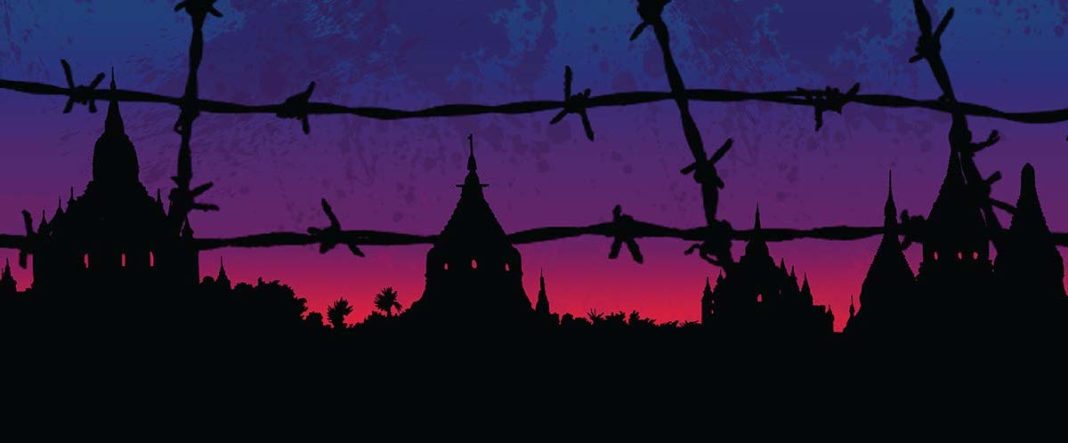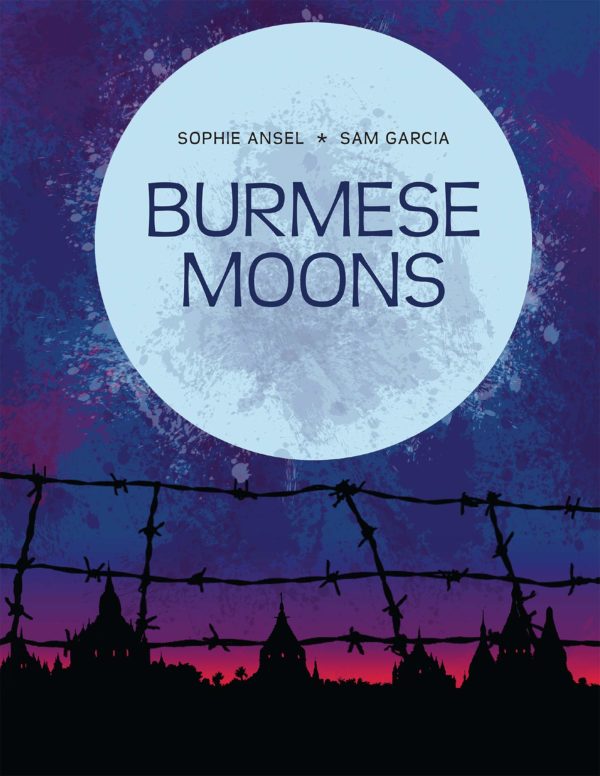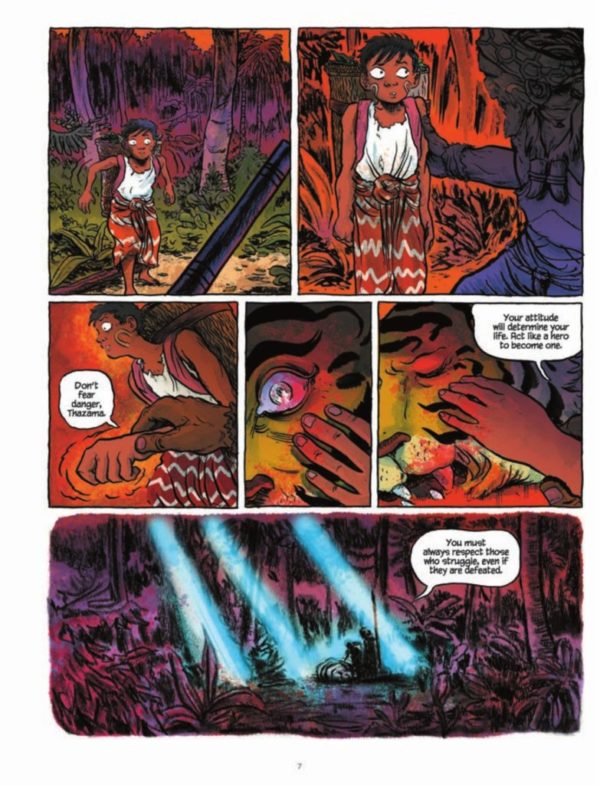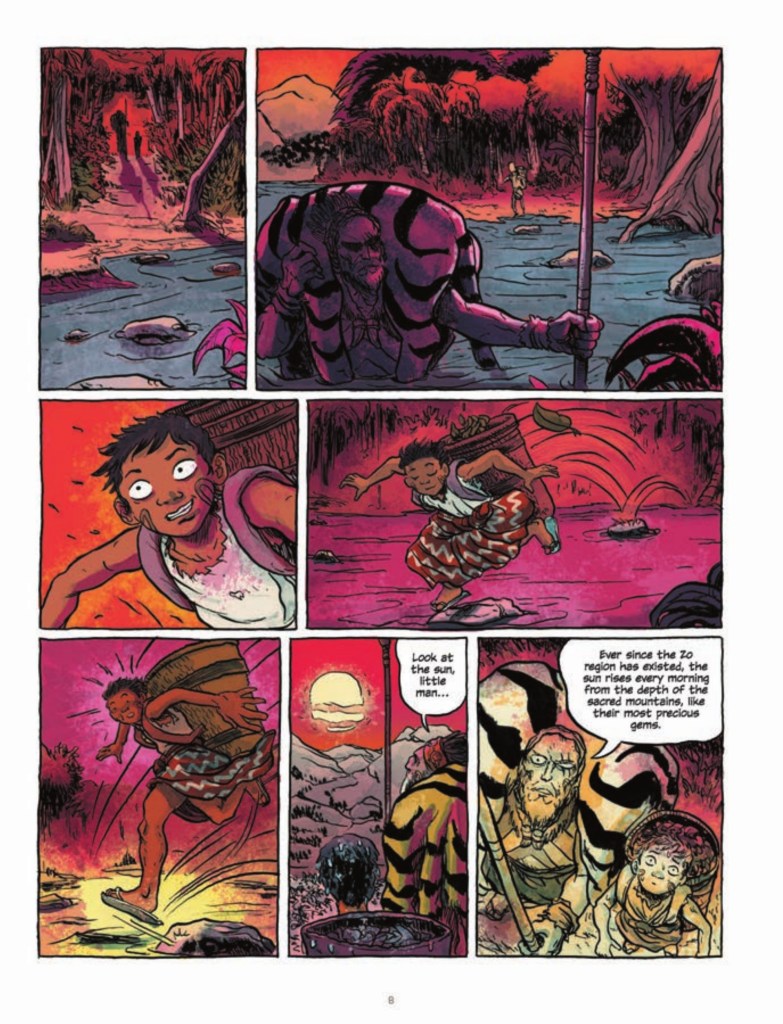Burmese Moons
Written by Sophie Ansel
Illustrated by Sam Garcia
IDW EuroComics
This seems to be a year for rough graphic novels. Not rough reading, but rough experiencing the horror lived by other people in other countries that I sadly and embarrassingly don’t give much regular thought to if any. That’s my shame, of course, and the shame of plenty of others like me, and it’s hard to say that I know what to do with the information I’m presented with in powerful works like Vanni or After The Spring or Mikel, just to name a few, but it’s a positive that books like those exist to at least spread awareness and hopefully grab the attention of someone who has the resources to do more than feel awful.
Burmese Moons is the latest in my encounters with these books. It’s a brutal story that written with compassion and thorough research by documentary filmmaker Sophie Ansel and illustrated by Sam Garcia as if he’s on a mission to not only reproduce the experience of the people depicted in the book, but also take their perception to another level that makes fear and horror tangible and creates a surrealist cascade of desperate lives grappling for survival and revolution.
The events portrayed in Burmese Moons happened in 1988, known as both the 8-8-88 Uprisings and the People Power Uprising, which saw massive demonstrations against the government. Burma, or Myanmar as it became known — the latter is considered the formal written name of the country, the former the colloquial name — was under the control of dictator Ne Win, who resigned following the uprising after thousands of protester deaths. Burmese Moons covers these protests, but more importantly follows events afterward, fueled by a military dictatorship that seized control, terrorized its own citizens, and caused thousands of further deaths.
The graphic novel focuses on the Zo people who live in a remote region of the country and attempt to honor their history, both distant and recent. Part of that history includes the participation of Zo people in World War II, and Thazama grows up on stories about those heroes with an impression of what soldiers are like — filled with honor who act with bravery. That’s quite the opposite of the soldiers who arrive in Thazama’s home and terrorize his neighbors, seizing them as slaves to attend to them, accompany them on their marches, and to often end of raped or murdered. Those who do return from their ordeal look like the walking dead.
This isn’t a one-time event though — it becomes just a part of life and friends of Thazama’s are affected by it. With the village being choked out of existence, Thazama and his friend Moonpi head to the city to make money to help sustain their village and once there, become involved with anti-government radicals hoping to groom their fellow citizens for protest against the brutal regime. Working as a tour guide and facing the ignorant westerners who visit the country and brush aside the abuse forced on the citizens, Thazama embraces the anti-government effort and soon pays for his involvement with a look at what happens to people in Burma who stand up for the rights of others and demand better. This also becomes the way Thazama learns how to effectively oppose tyranny, and the story turns into a lesson in the kind of resolve it really takes to defeat such over-the-top oppression.
But brutality follows Thazama everywhere and suffering becomes the common denominator wherever this story takes us. It’s a bad world and the nightmares it contains seldom shrink, but rather grow and engulf lives. And for every kindhearted person, there’s a network of humans working to take advantage of people in crisis, to use them and toss them aside, in an upsetting orgy of sadism that too often seems to define the human experience.
Burmese Moon is as grim a depiction of humanity as I’ve ever seen in comics, largely because of its grounding in reality and also Garcia’s astonishing ability to take a nightmare
in the physical world and give it psychological resonance in visual terms. It’s a tag-team effort of horror, really — Ansel punctuates every drama by delivering contexts and statistics that wipe away your hope as a reader, and Garcia takes it to a level that reminds me sometimes of old EC horror stories, other times of apocalyptic Christian artwork and the comics of Jack Chick. Considering that Burmese Moons does portray a kind of hell on Earth, I can’t think of any more appropriate way of depicting it and Garcia has provided us with an artistic tour de force of immense intensity and inventiveness that I believe goes unmatched by any other work I’ve seen this year.










